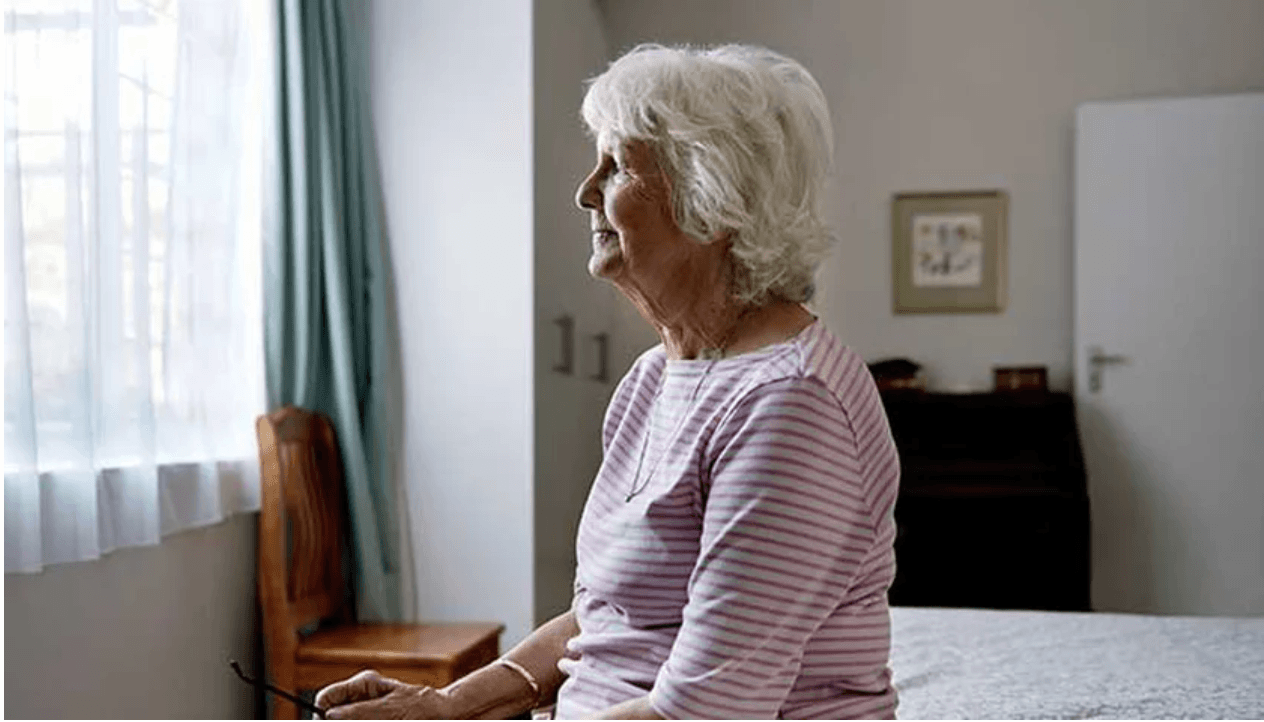
Blog Layout
Living with Arthritis: Arthritis Types, Symptoms, and Treatment for Seniors
Lisa Reisman • Aug 28, 2019
How can we help you today?
Thank you for contacting us.
We will get back to you as soon as possible.
We will get back to you as soon as possible.
Oops, there was an error sending your message.
Please try again later.
Please try again later.
Living with Arthritis
There are more than 100 different forms of arthritis in the world that affect millions of people. It’s a painful, debilitating disease that can cause changes you can see and feel such as swelling, warmth, and redness in your joints. Depending on the type of arthritis, pain can be short but intense. In others, it can be less noticeable but can still damage your joints over time. Understanding why arthritis causes so much pain will help you or a loved one handle it more appropriately in order to find the best therapy for the diagnosis.
What is Arthritis?
Perhaps you’ve seen someone hunched over holding their lower back in agony, or noticed someone who’s unable to write because their hand can’t grip the pen just right. These may be the crippling symptoms of arthritis. The term “arthritis” is not a single disease, but more so an informal way of referring to pain or joint disease. The most common symptoms of arthritis are swelling, pain, stiffness, and decreased range of motion. Symptoms can come and go as well as be mild, moderate or severe. Symptoms seemingly stay the same over a long period of time, but eventually the pain progresses. The pain can make it difficult to carry out daily tasks such as walking up and down stairs, using writing utensils, or something simple like brushing your hair.
What Kind of Arthritis do I have?
The types of arthritis can vary in how they affect your body. Osteoarthritis is the most common type of arthritis. Osteoarthritis is when the cartilage (the slick, cushioning surface on the ends of bones) wears away, allowing bone to rub against bone. The pain can be severe, and risk factors such as excessive weight gain, family history, age, and previous injuries can all play a role in its presence. People are most likely to develop osteoarthritis in the hands, neck, lower back, or any heavy weight bearing joints of the body. Symptoms of this type of arthritis can show in the form of stiffness and mild discomfort, and be associated with activities such as walking and bending.
Rheumatoid arthritis is an autoimmune disease where the body attacks the lining of a joint as if it were trying to protect you from an injury or disease. For example, if you get a tiny splinter in your finger, the finger would then become inflamed, red, and start to throb. Rheumatoid arthritis can attack any joint in the body, including the joints in the fingers, wrists, shoulders, elbows, hips, knees, ankles, feet, and neck. Rheumatoid arthritis affects the body as a whole, so symptoms such as fever, weight loss, fatigue, and loss of appetite may be common. According to Greta M. Pelegrin, PharmD, the diagnosis of rheumatoid arthritis comprises a physical examination along with a blood test for the presence of rheumatoid factor (an antibody found in patients with RA); the presence of C-reactive protein (responsible for some inflammatory disorders); and an elevated erythrocyte sedimentation rate.
Gout is the most painful type of arthritis, and starts when crystals of uric acid form in the connective tissue and/or joint spaces. These deposits lead to swelling, redness, heat, pain, and stiffness in the joint. People who suffer from gout should avoid eating foods such as shellfish, liver, dried beans, peas, anchovies, and gravy because often times they can trigger an attack. Gout is commonly an issue in the big toe, but can affect other joints like elbows, ankles, knees, and wrists.
Pain Management & Treatment
Each type of arthritis is treated differently, however there are a couple common ways to deal with arthritis that include rest, exercise, eating a healthy, well-balanced diet, and learning the right way to use and protect your joints. If you have a family member who suffers from pain due to arthritis, take them to get fitted for certain types of support shoes and a cane— this will help with pain in the knees and hips when walking. There are certain tools that can help open jars and doors as well if a person suffers from pain in the wrists and fingers.
A panel of doctors with experience diagnosing and treating issues relating to chronic pain say that chronic pain is a complex disease requiring an “integrated, interdisciplinary approach.” They routinely use various combinations of drug-based, interventional, psychological and nonmedical therapies. “It’s not unlike blood pressure medications,” Dr. Buvanendran says. “They don’t work very well if you don’t exercise and control your diet. In the same way, we take a multidisciplinary approach to chronic pain.”
It’s typical for doctors to write prescriptions for opioid-based painkillers, and even more typical for the older community suffering from more than one type of pain, to become addicted. Nonsteroidal anti-inflammatory drugs (NSAIDs), such as naproxen, celecoxib and ibuprofen most definitely have a place in this world— they key is finding the appropriate and most effective drug for the pain and using it on an as-needed basis. “There are many different NSAIDs, and patients respond to them differently. Finding the correct agent takes trial-and-error,” Dr. Kramskiy says. “Patients often think if one doesn’t work, we’ve failed, but that’s often not the case. NSAIDs should only be used when they are needed most – for example, first thing in the morning or after exercise – to avoid serious gastrointestinal, cardiac and renal side effects.” He also stresses that pain relievers should be used within the larger context of lifestyle changes and therapies that help slow disease progression. “We want to minimize symptoms and improve function to avoid long-term [use of painkillers],” he says.
Injections are another solution to pain management caused from arthritis. Hydraulic acid occurs naturally in cartilage, and can be injected into painful joints and provide patients with osteoarthritis weeks, and even months of relief. Vladimir Kramskiy, MD, a neurologist and director of the Ambulatory Recuperative Pain Medicine Program at Hospital for Special Surgery in New York City, says that in the best scenarios, people with early disease may respond well to injections for years before the arthritis progresses to the point of needing surgery. Another beneficial needle prick may be trying acupuncture, a form of traditional Chinese medicine involving thin needles inserted into the skin, which often times can provide pain relief for a number of issues.
You’re Not Alone
Living with chronic pain caused by arthritis affects more than 50 million Americans, and according to the Arthritis Foundation
1,814, 000 of them live in Georgia. Connecting with those who understand what it’s like to deal with arthritis might help you handle your diagnosis and treatment plan a bit easier. The Arthritis Foundation hosts personalized, goal-setting events helping you learn ways to live with rheumatoid arthritis alongside a local rheumatologist. In addition, the Arthritis Foundation of Georgia has recently partnered with the Aquatic Exercise Association, helping those with arthritis find exercise routines such as Tai Chi, to stay active and healthy.
Most importantly, encourage your loved one to talk about her pain with her doctor, therapist or a family member. Living with arthritis doesn’t have to be something you or your loved one has to go through alone. There are plenty of people who are going through the same thing.

14 Aug, 2020
You’ve heard the name many times by now— Coronavirus (or COVID-19) is a disease that’s become so deadly it’s spiraled us into a global pandemic. For those unfamiliar with how it got its name, in COVID-19, 'CO' stands for 'corona,' 'VI' for 'virus,' and 'D' for the disease. According to the CDC, “coronavirus” is actually an umbrella term for a family of viruses that can cause illness in animals or humans.

By Lisa Reisman
•
29 Aug, 2019
No matter what age, we all have moments of confusion. But when your elderly loved one is consistently exhibiting these signs, it might be because s/he is undergoing cognitive impairment. Having difficulty comprehending is a common sign these problems; however, it is often brushed aside as "old age." The person experiencing these difficulties may make excuses: the TV shows today are too complicated, their family members talk too fast, the lights are too dim to read. Ignoring the signs of comprehension difficulties, though, just make life harder for everyone involved. Comprehension and Confusion Comprehension is the opposite of confusion. Comprehension is a complex process in the brain through a system of nerves and chemicals, and it involves language, recognition, and function processes. Cognitive impairment disorders like dementia and Alzheimer's disrupt those complex processes. It can manifest as sudden memory loss, impaired motor coordination, and other more subtle thought processes that we will discuss. When someone has difficulty with comprehension, s/he has trouble putting together the various actions needed to perform a task. For example, your mom might need a cup from the cupboard. In order to do so, she must first decide she wants the cup. Then she might need to get out of her chair, walk across the kitchen, raise her hand, open the cupboard, and take the cup out of the cupboard. If she has difficulty with comprehension, she will have a hard time putting all of these elements to work to achieve her goal, which might result in several different outcomes: she could fall, break the cup, or just forget what she was doing before she reaches the cupboard. She knows what she wants to do but has trouble making all the connections necessary to get there. How Cognitive Impairment Affects Your Loved One Difficulty comprehending is frustrating for your elderly loved one and for you, but the first step toward helping your loved one is understanding what s/he is experiencing. Here are some examples of how someone with dementia or Alzheimer's disease might have trouble comprehending everyday situations. TV/books: Someone with dementia might not be able to follow a basic storyline and could not tell somebody else what is going on in the TV show or book. Social situations: Someone with dementia might see two children playing and interpret that they are fighting or vice versa. The person with dementia may step in and try to resolve the situation without realizing what is actually happening. Conversations: As with the TV/book example, someone with dementia can't follow an everyday conversation . S/he doesn't know who or what is being discussed and especially cannot tell when the subject matter has changed. Time: Someone with trouble comprehending will have difficulty telling time and might not know whether it is day or night. How Cognitive Impairment Affects You Because of these comprehension difficulties, the person experiencing dementia or Alzheimer's disease will rely on the people around him/her to tell him/her what is going on. For instance, your loved one may constantly ask you to repeat yourself. S/he may also have trouble following instructions. These situations can be aggravating for you, particularly if they are new, however it is important to understand that your loved one is not trying to bother you by failing to follow directions or asking you to repeat information over and over. These are symptoms of cognitive impairment , and neither you nor they can control it. If your family member begins to exhibit any of these signs, take him or her to your physician with a description of the comprehension difficulties you've noticed so that s/he has plenty of information for a cognitive function assessment. If the doctor diagnoses dementia or Alzheimer's, ask specific questions about treatment so that you can do your part to serve your loved one despite mild cognitive impairment. It is important to get help for your loved one, and there is no reason for you to care for your loved one alone. Caring for an aging relative requires time, patience, and expert care. Complete Care At Home can help you create a customized plan to meet the unique needs of your loved one with dementia or Alzheimer's disease. Contact us today for an expert assessment.






